What Is Smudging?
Originally Posted at https://blog.priceindustries.com/what-is-smudging
Ceiling Smudging and Air Supply Outlets
Smudging is traditionally and more commonly known among First Nations as a ceremonial burning of one or more medicines gathered from the earth, an important tradition passed down from generation to generation. In the world of HVAC, smudging is a term used to describe the result of secondary room air being induced or drawn into the primary air stream along the ceiling.
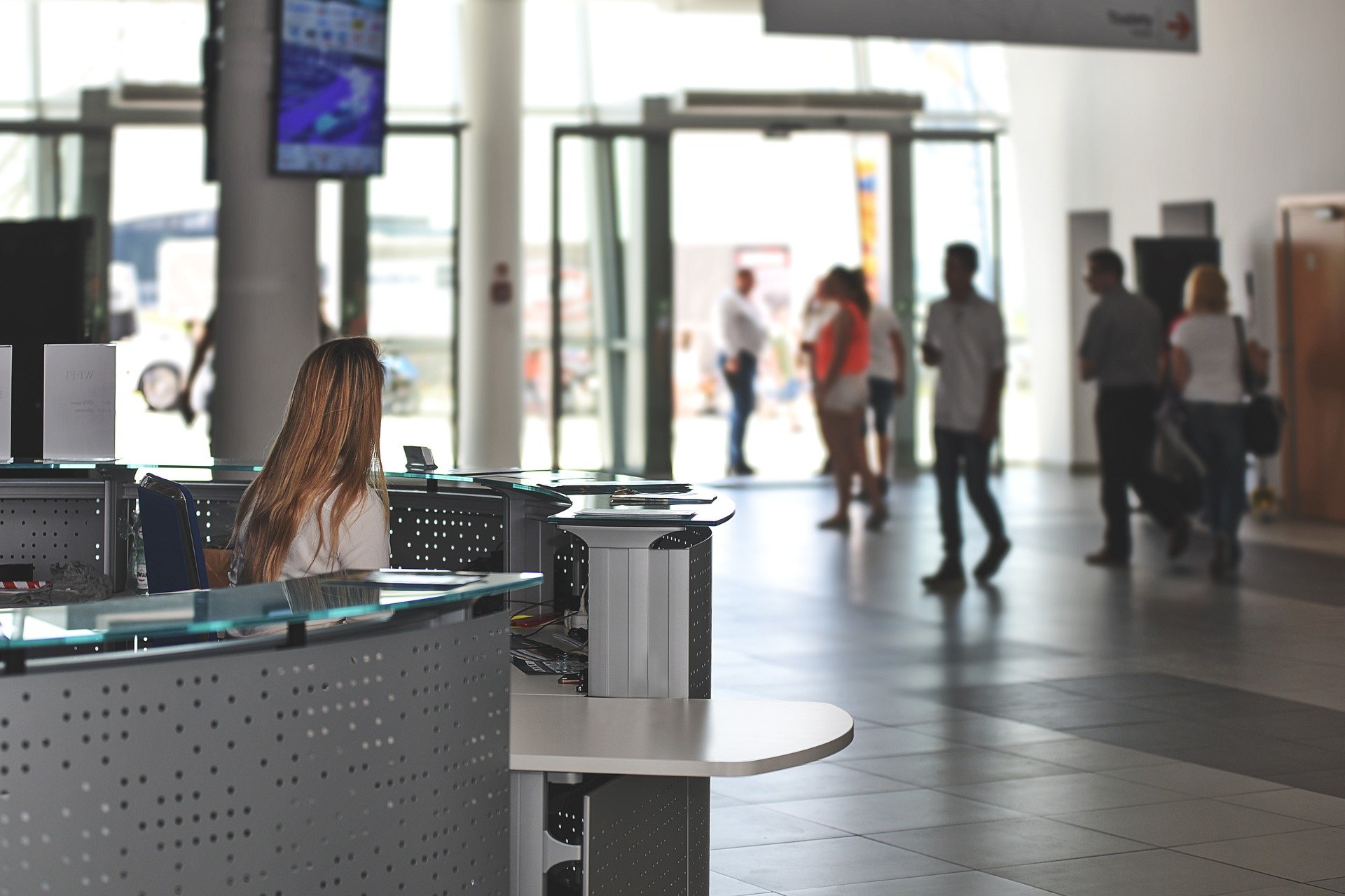
Smudging is a result of dirt being deposited on the ceiling, a common problem in all types of buildings. It occurs more often in some buildings than in others and more often in certain areas within a given building. There are only two sources of dirt within a building:
- Air supplied to the space
- The space itself
Dirt is deposited on the ceiling by the interaction of the supply air from the ceiling mounted air outletwith the entrainment of the air within the space. It is the delivery of the primary supply air to the room which results in the conditions causing smudging. However, if there is no dirt present in the supply air or the space, then smudging will not occur.
The conditions created by various types of ceiling outlets and how smudging occurs are illustrated in the following images.
A typical round ceiling diffuser application is shown in Figure 1. Due to the shape of the outer cone at the ceiling, the supply air leaves the diffuser with a looping effect, projecting the air downward and then back onto the ceiling. This results in the formation of a low pressure or eddy area adjacent to the edge of the diffuser as shown in the diagram. This eddy area of dirt laden air deposits the dirt on the ceiling and results in an area of dirt concentration on the ceiling which can be several inches wide. Additional smudging will occur on the ceiling further away from the diffuser in the form of a graying effect (Figure 2).

Figure 2 – Round Ceiling Diffuser
Another popular diffuser type is a square or rectangular model with modular core or perforated face. These models have very discrete directional patterns in either 1, 2, 3, or 4-way flow (Figure 3).

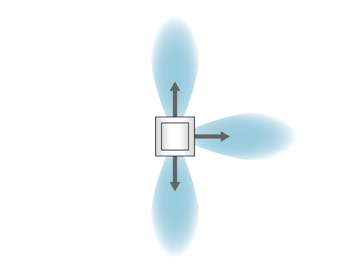
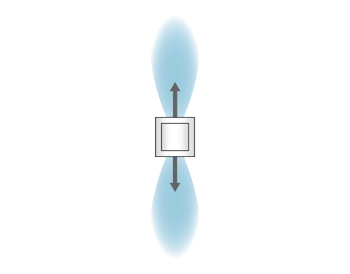
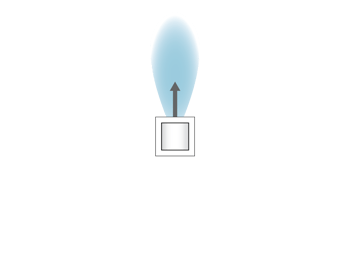
Figure 3 – Directional Air Pattern; 4-way, 3-way, 2-way, and 1-way airflow pattern from square diffuser with modular core
In this case, smudging occurs along the boundary of the air jets with the highest concentration of dirt near the diffuser face (Figure 4).

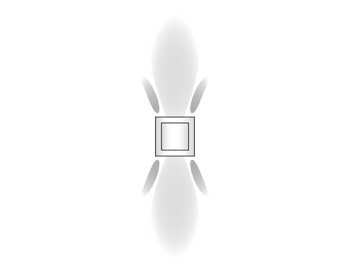
Figure 4 – Directional Air Pattern Smudging
A typical application of a square diffuser with a die-formed backpan and a 360 degree air pattern is shown in Figure 5. 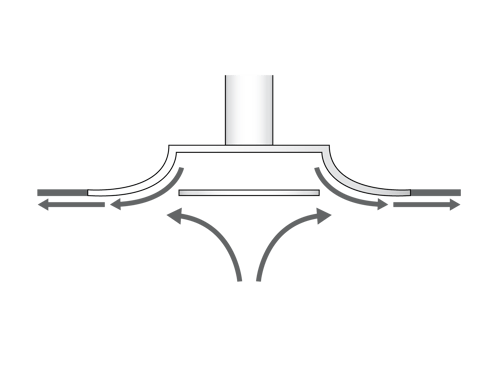
Figure 5 – Square Plaque Diffuser
Due to the shape of the outer cone on the ceiling and the airflow characteristics of this type of diffuser, the supply air pattern eliminates the eddy or low pressure area and thus does not have the concentrated smudge area characteristic of other ceiling diffusers (Figure 6).
Figure 6 – Square Plaque Diffuser Smudging
Because of the air pattern characteristics (Figure 7), smudging with this type of diffuser is spread out over a wide area around the diffuser and results in a graying effect on the ceiling. Slot type diffusers, light troffer diffusers and others which provide a tight air pattern on the ceiling have the same effect on smudging as the square type diffusers.
Figure 7 – Smoke Test of Square Plaque Diffuser
The type of ceiling also has an effect on smudging. A smooth, flat ceiling will help to reduce smudging. A rough or textured ceiling surface tends to concentrate the dirt particles and thus accentuates smudging.
Smudging can be eliminated or significantly reduced by control of the two sources of dirt: the supply air and the space. If dirt is not present in either source, there will be no smudging.
Clean supply air can be provided by the use of adequate means of filtration in the air supply unit and by regular filter maintenance. The ductwork system should be protected during construction to prevent any accumulation of dirt in the ducts. Adequate filtration should be provided during temporary usage. Any dirt which accumulates in the ductwork will eventually show up when the air system is put into operating condition.
Good housekeeping will eliminate or drastically reduce the amount of dirt within the space. However, certain areas within a building are difficult to maintain dirt-free. Areas such as entries, entrance lobbies and similar areas where high traffic rates result in a large dirt carry-over from the outside, require special attention with regard this problem. In these areas the following can be used to reduce the overall effect of smudging:
- Use ceiling air diffusers which tend to minimize the smudging of the ceiling, such as square plaque diffusers, or similar types.
- Maintain a high level of housekeeping with problem areas.
- Use ceiling air diffusers with smooth surfaces which can be easily cleaned and maintain a regular cleaning schedule.
- Avoid use of rough or textured ceiling surfaces in problem areas as they accentuate the smudging effect and appearance.
The use of smudge rings on all types of diffusers does not eliminate smudging, but tends to spread it over the ceiling area around the diffuser to avoid unsightly, concentrated areas of dirt deposition. Even with the use of smudge rings, cleaning of the ceiling or tile replacement will eventually be required.
Where a rough or textured ceiling surface exists due to the architectural treatment, special attention should be given to these areas if smudging is going to be a problem. Such areas may be provided with a special ceiling module for the diffusers which can be easily cleaned.
If reasonable precautions are taken in the selection of ceiling outlets, providing a clean environment and other provisions, the problem of smudging can be significantly reduced or eliminated.
